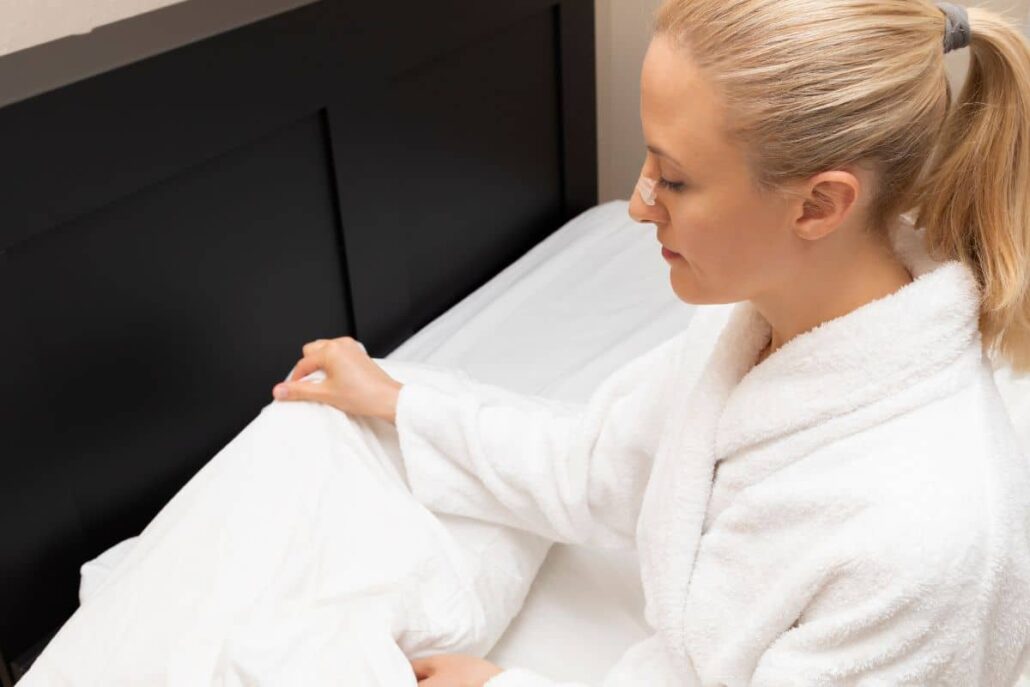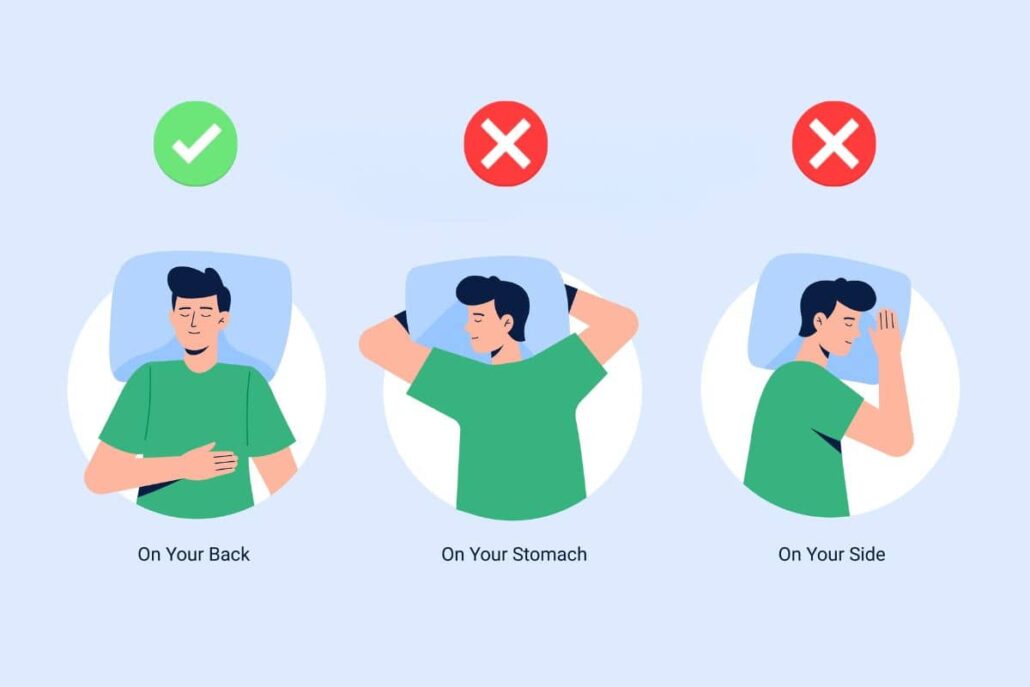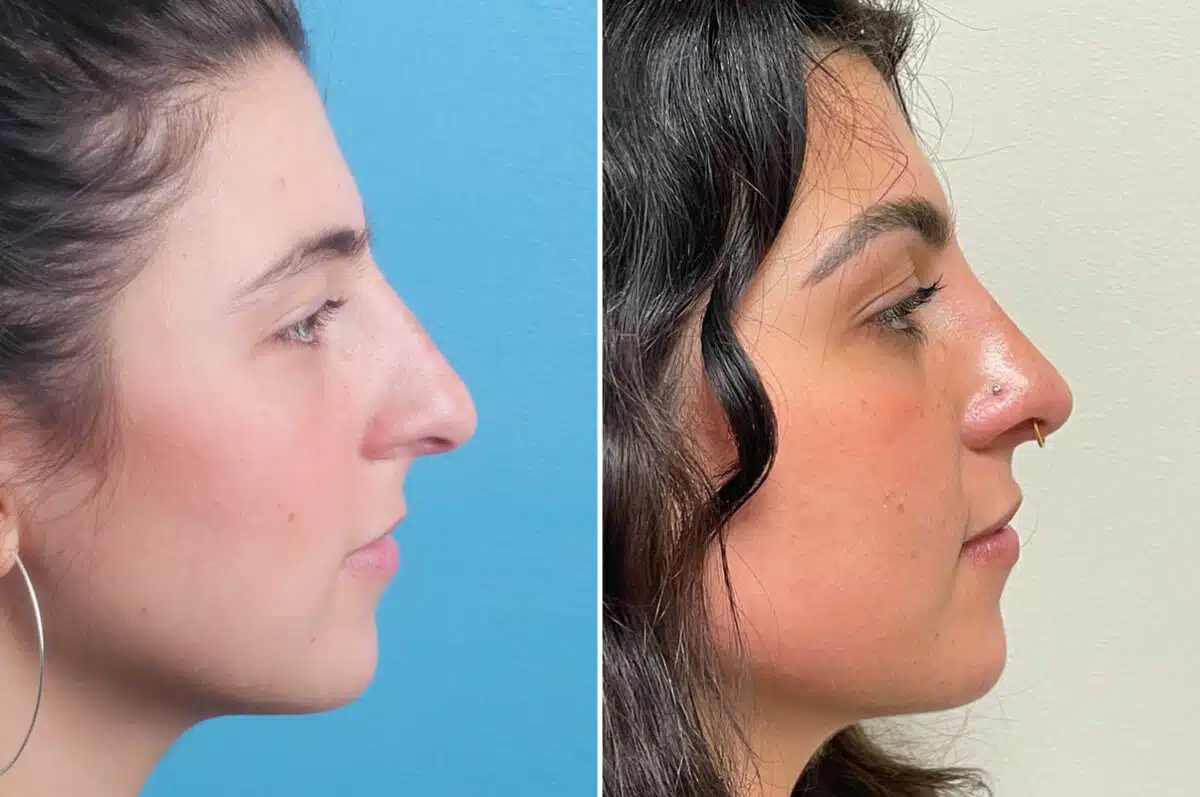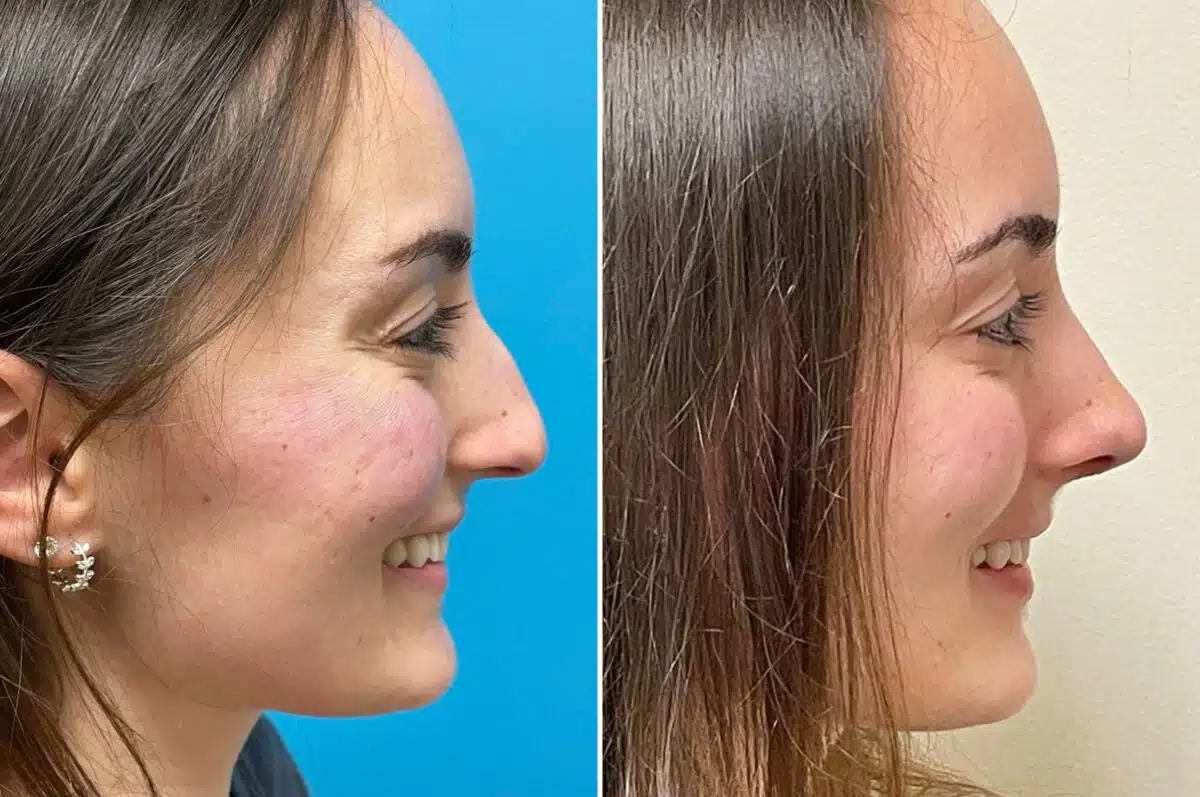How to Sleep After Rhinoplasty: Tips for Elevation, Comfort and a Smooth Recovery

A smooth rhinoplasty recovery begins with more than just following your surgeon’s instructions—it also depends on proper sleep. For many patients, figuring out how to sleep after rhinoplasty is one of the biggest challenges in the early days of healing. That’s because your sleeping position can impact swelling, breathing, and even your final results.
Whether you’ve just had a rhinoplasty or are preparing for nose surgery, understanding the role of sleep in recovery is essential. From the first night after your rhinoplasty procedure to the weeks that follow, establishing safe sleeping positions and sticking to a consistent postoperative routine can make a big difference in how you feel and how you heal.
In this blog, we’ll walk you through everything you need to know—from how long to sleep elevated after rhinoplasty to how to keep from rolling onto your side or stomach. You’ll also learn how long it takes to return to your normal sleep habits and why expert care is key to a successful outcome.
Smart Sleep Strategies for Healing After Rhinoplasty Surgery
- Sleeping elevated after rhinoplasty reduces swelling and protects results.
- Back sleeping with head support is the safest position after nose surgery.
- You should avoid side and stomach sleeping until your surgeon clears you.
- Using extra pillows, wedge pillows, or recliners can help you sleep comfortably.
- Choosing an experienced rhinoplasty surgeon like Dr. Becker can support a smoother, faster recovery.
Maintaining these strategies is an important part of your overall healing process and can contribute to a quick recovery.
Why Quality Sleep Is Critical for Your Rhinoplasty Recovery
Rhinoplasty is a delicate facial plastic surgery that involves reshaping the nasal structure. Whether the goal is to enhance facial balance, improve nasal function, or revise a previous procedure, the healing process begins immediately after surgery. Rest is one of the body’s most important tools for healing. A consistent sleep routine also helps reduce nasal congestion, supports pain management, and minimizes discomfort during the healing process.
Sleep allows your body to repair itself, manage inflammation, and regulate immune function. But after rhinoplasty, your usual sleep habits might need to change, especially if you’re used to sleeping on your side or stomach. Poor sleep positioning can lead to increased swelling, discomfort, or even pressure on the healing nasal structure, which may affect the outcome of your rhinoplasty results.
That’s why adjusting your sleeping environment is a vital part of your postoperative care. With a few changes, you can still get a good night’s rest without compromising your rhinoplasty journey.
Back, Side or Stomach? The Best Sleep Position After Rhinoplasty
After rhinoplasty surgery, the safest and most supportive sleep position is on your back, with your head elevated.
Keeping your head above your heart helps minimize swelling, promotes healthy blood flow, and protects your healing nose from accidental contact or compression. This position also prevents unnecessary pressure on the surgery site and supports drainage from the nasal passages, both of which are essential during the early healing stages. Lying flat or turning to your side can place pressure on the surgical site and may interfere with the healing process or cause asymmetry.
If back sleeping isn’t your usual position, it may take some time to adjust. But with practice—and a few helpful tools—it becomes easier.
Tips to Help Stay Comfortable While Sleeping Elevated
Sleeping elevated doesn’t have to mean being uncomfortable. There are several ways to make this adjustment more manageable in the days and weeks following your nose surgery.

Try these simple strategies:
- Use a wedge pillow: A wedge pillow supports your upper body and keeps your head at the right angle without multiple shifting pillows.
- Stack extra pillows: If you don’t have a wedge, use two to three firm pillows to prop yourself up. Make sure your head and shoulders are elevated together to avoid neck strain.
- Sleep in a recliner: Recliners can naturally keep your upper body raised and may offer better sleep in the first few nights after surgery.
- Use rolled towels or small cushions: Placing these on either side of your body can help prevent you from turning while you sleep.
- Avoid caffeine before bed: This helps improve sleep quality and reduces nighttime restlessness.
A calm, cool sleeping environment also supports recovery. Use blackout curtains or a sleep mask, keep your room quiet, and avoid screens an hour before bed to promote restful sleep. If you find yourself waking up frequently, short naps during the day can help you stay rested without compromising healing.
How Long to Sleep Elevated After Rhinoplasty
One of the most common questions patients ask is: “How long do I have to sleep elevated after rhinoplasty?”
Most surgeons recommend sleeping with your head elevated for at least 1 to 2 weeks following the procedure. This is when postoperative swelling is typically at its peak. Elevating your head helps reduce swelling around the nose and eyes and supports proper drainage of fluid.By reducing swelling and supporting drainage, elevation helps improve circulation at the surgery site and promotes a smoother rhinoplasty recovery experience.
Some patients may benefit from extending this period to 3 to 4 weeks, depending on the type of rhinoplasty and the degree of swelling. Your surgeon will guide you on when it’s safe to return to flat sleeping.
If you’ve had a revision rhinoplasty or more extensive work done, your healing timeline may be longer. Always follow your surgeon’s advice to ensure optimal surgical outcomes.
start your rhinoplasty journey with expert guidance every step of the way
Book a consultation with Dr. Daniel Becker today at our Sewell or Voorhees offices.
Sleep Positions to Avoid
While your nose is healing, it’s important to avoid any position that could put pressure on the surgical site. That includes:
- Side sleeping: Lying on your side can shift the nose or cause swelling to increase unevenly.
- Stomach sleeping: This puts direct pressure on the face and nasal area, which can distort the surgical results.
- Curling up or sleeping with your face resting in your hands or pillows: These can press against the nose unintentionally.

Being mindful of these positions will help prevent complications and contribute to your overall recovery experience.
How to Prevent Rolling Over
If you’re a natural side sleeper or stomach sleeper, staying on your back all night can be tough. But there are ways to keep your body in place:
- Build a pillow barrier: Place pillows on both sides of your body to limit movement.
- Try a body pillow: Hugging a body pillow can help satisfy the sensation of side sleeping without turning.
- Use a weighted blanket: The gentle pressure can make you feel secure and discourage tossing and turning.
- Wear a soft sleep mask: This can help cue your body that it’s time to stay still and rest.
- Use a Travel Pillow: The U-shaped pillow that you put around your neck, the one folks use on an airplane.
If you do roll over, don’t panic. Just gently reposition yourself and check your nose for signs of discomfort or swelling. Most brief movements won’t cause harm, but it’s best to correct them quickly.
Why Expert Care Matters for a Smooth Rhinoplasty Recovery
Rhinoplasty is not just about the surgical procedure—it’s about the entire experience, including safe, attentive postoperative care. Choosing a skilled and experienced facial plastic surgeon ensures that you’re supported through every phase of your recovery, including questions about sleeping and healing.
Dr. Daniel G. Becker is a board-certified facial plastic and reconstructive surgeon and nationally recognized rhinoplasty specialist with decades of experience performing both cosmetic and functional nasal surgery. At The Rhinoplasty Center, Dr. Becker provides detailed postoperative instructions and personalized care that make recovery safer and more comfortable.
From expert techniques that reduce swelling to supportive follow-ups, Dr. Becker helps patients feel confident throughout their rhinoplasty journey.
Transitioning Back to Normal Sleep Positions
Once your swelling has subsided and your surgeon gives the go-ahead, you can begin easing back into your old sleeping position. This typically happens after the first few weeks, but the timeline can vary.
Start by reducing your elevation gradually—first removing one pillow or reclining less steeply. If you’re a side sleeper, try placing a soft pillow under your cheek to reduce direct pressure on the nasal area. Just be sure not to sleep directly on your nose until your surgeon confirms it’s safe.
Adjusting to Sleeping Without a Cast
After your rhinoplasty cast is removed—typically within 5 to 7 days, depending on your individual healing and the specifics of your procedure—it can feel both freeing and a little vulnerable. Many patients ask, “How do I sleep after rhinoplasty cast removal?”
Continue to sleep elevated for at least another week, as internal healing is still taking place. You may feel more comfortable, but your nasal structures are still delicate.
Keep up the back-sleeping position, protect your nose from bumps, and avoid putting weight or pressure on your face. Even without the visible protection of the cast, your nose still needs time to fully stabilize.
Consult with a Nose Surgery Expert
Getting quality rest after a nose job doesn’t have to be difficult. With the right techniques and expert guidance, you can protect your results and recover with greater comfort.
If you’re considering rhinoplasty or have questions about your recovery, schedule a consultation with Dr. Daniel Becker at The Rhinoplasty Center. Dr. Becker is known for his precision, experience, and dedication to patient satisfaction. As a Clinical Professor at the University of Pennsylvania and author of more than 100 scientific publications, he brings a deep level of expertise and academic leadership to every procedure. His detailed approach to operative care, emphasis on pain management, and personalized recovery plans are designed to support long-term comfort and an improved nose appearance. Whether it’s your first rhinoplasty or a revision procedure, he and his team provide personalized care every step of the way.
Take the next step in your rhinoplasty journey with a trusted expert.
Sleeping after Rhinoplasty FAQs
Is it safe to take sleeping medication post-rhinoplasty?
Yes, but only under your surgeon’s guidance. Avoid over-the-counter sleep aids that may thin the blood or interfere with other medications. If sleep is difficult, speak with your surgeon about safe options.
Can sleeping in a recliner aid in nose job recovery?
Absolutely. Recliners naturally support elevated sleeping and can help keep you in the right position. Many patients find them helpful during the first week of recovery.
How do I care for my nose at night? Should I apply ice or ointments before bed?
You should follow your surgeon’s specific nighttime care instructions. In most cases, icing is limited to the first 48 hours. Avoid applying pressure or heavy ointments unless instructed. Keep your nasal area clean and avoid touching the surgical site during sleep.

